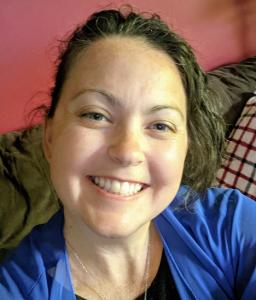
1. How long have you worked with the Department of Transportation (DOT), and what was your background before your current position?
I have been at the Department of Transportation (DOT) for the past year and a half. I became interested in contracting after exploring the Department of Homeland Security's (DHS) Acquisition Professional Career Program at a job fair. I enrolled in the program in 2008 and was a part of DHS' first full-size group. Over the first four years at DHS, I rotated between three distinct components, including FEMA, Immigration and Customs Enforcement, and the Science and Technology Directorate. I gained a ton of invaluable knowledge while doing so, building up my network and my core understanding of contracting. I later worked with the FBI for roughly eight years and completed the 2010–2011 cohort in the Contract Management Leadership Development Program through the National Contract Management Association. I joined the National Oceanic and Atmospheric Administration as a contracting officer in 2020. I very much enjoyed my time there, but after working there for eight months, I received an email advertising the DOT was seeking a procurement analyst to lead their acquisition workforce initiatives. I made the decision that this was not an opportunity to pass up. Since then, I've enjoyed being a member of the working groups, helping to shape the acquisition workforce, and advocating for it.
2. What are some of the major efforts you (and/or your team) are working on at DOT?
All components that tie FAC-C Modernization to departmental policy updates and operational improvements, as well as the general transfer from the old to the new framework and the function of credentials. With this new policy, I've been working with others to develop updated qualification guidelines related to the transition from the legacy FAC-C levels to the new FAC-C (Professional), including developing our revised warrant policies, and generally how we'll update things to conform with the new FAC-C framework, as well as estimating the lead time required. I am currently formulating a strategy to ensure that we are equipped to execute our tasks and get the necessary qualifications in place for our contracting officers. Imagine throwing a bucket of Legos on the floor and deciding what to build. There are an infinite number of options, but only a few methods for determining the optimal solution to satisfy the demands of the acquisition workforce. Additionally, I've been encouraging acquisition workforce members to begin to pursue credentials that interest them in order to be proactive and anticipate future mission needs and career opportunities.
3. Tell us about one of your biggest successes achieved by you/your team/agency.
I have spent my time at DOT working in the Office of the Senior Procurement Executive to ensure that our acquisition policies are current and optimize our resources. This means that outdated/contradictory policies have been resolved or clarified, and that previous policies have been reexamined. A close alignment between the acquisition workforce and acquisition policy has resulted from this, allowing for more meaningful practices, better career growth, and more effective outputs. I have been actively participating in a number of FAI-sponsored government-wide working groups related to the implementation of FAI CSOD, the FAI CSOD Management System Advisory Board, the restart of CLP requirements, and FAC-C Modernization. Overall, my goal is to help promote acquisition policy programs to develop a better organized and skilled acquisition workforce, both for DOT and across government.
4. What is the biggest challenge in your position supporting the acquisition workforce?
Increasing the FAI CSOD knowledge of the acquisition workforce as a whole and their familiarity with it. We are all still adjusting to this shift together since it is still a new program for us. We have been able to better grasp how CSOD functions thanks to the assistance of FAI and DAU.
5. What skills do you think are most critical to successfully perform your job?
Effective communication, leadership and enthusiasm. Sharing information in an effective manner is important so that the acquisition workforce is aware of requirements or policies. I communicate information with a focus on sharing the “why” and the benefits related to the changes (since change is hard, even when the outcome is going to be a net positive), to increase buy-in, acceptance and to motivate others.
6. What words of wisdom would you offer to your fellow acquisition workforce members?
You can’t reap what you don’t sow. From training to networking, you never know when knowledge or relationships will come in handy. Every opportunity to learn something new or meet new people with new perspectives and experiences is valuable. In the acquisition field, it’s never going to be possible to know it all, so knowing where or who to ask when something comes up is a major key to success. You could really tweak the adage about raising children to “it takes a village to have a successful acquisition program/career.” This is abundantly clear when you look at the fact that the acquisition field plays a very substantial role in government. Sometimes we get misunderstood to be as “paper pushers,” but we are so much more! Every time the government passes a new law, addresses an issue, or performs a function, it has to buy things, which is where we come in. We play a significant role in the everyday operations of the federal government, and what we do has real world impacts. Without the acquisition workforce, there is no functional government (for example, no building to report to, no network to sign onto, no laptop to use, no phone to call with questions, etc.) and, in terms of looking for a fulfilling career, what could be more fulfilling than that? So keep planting and harvesting!

